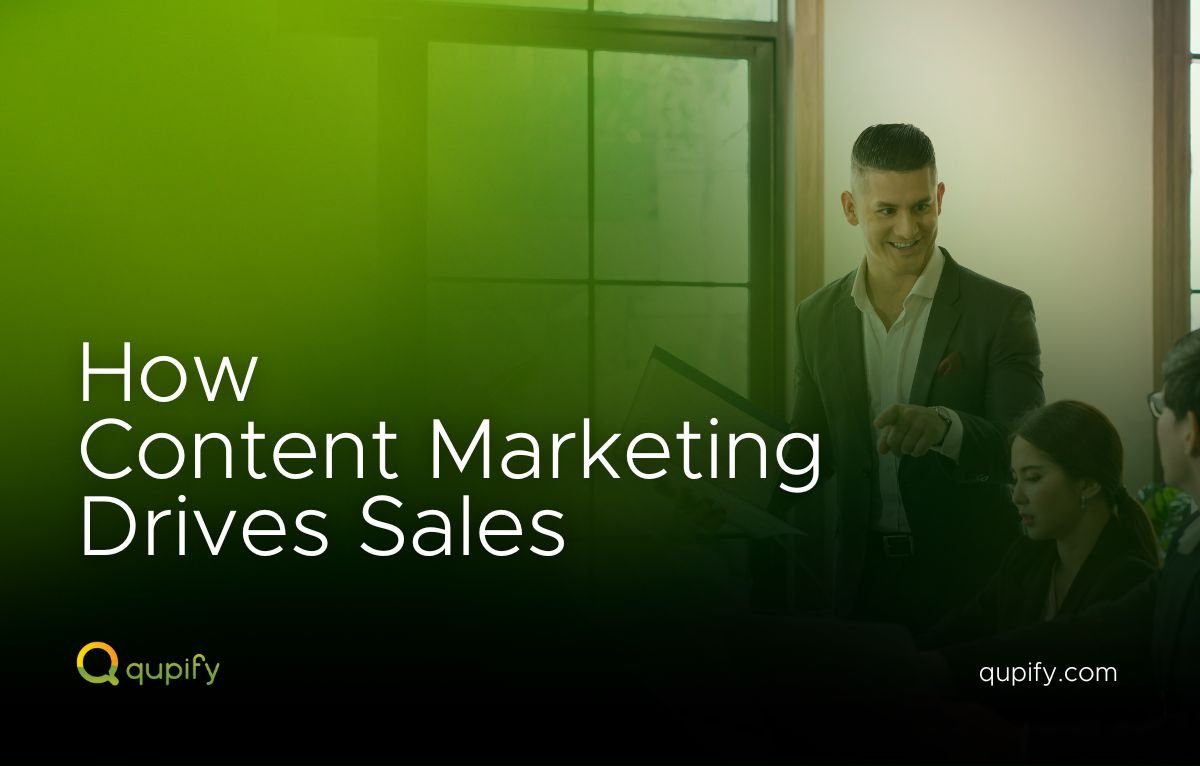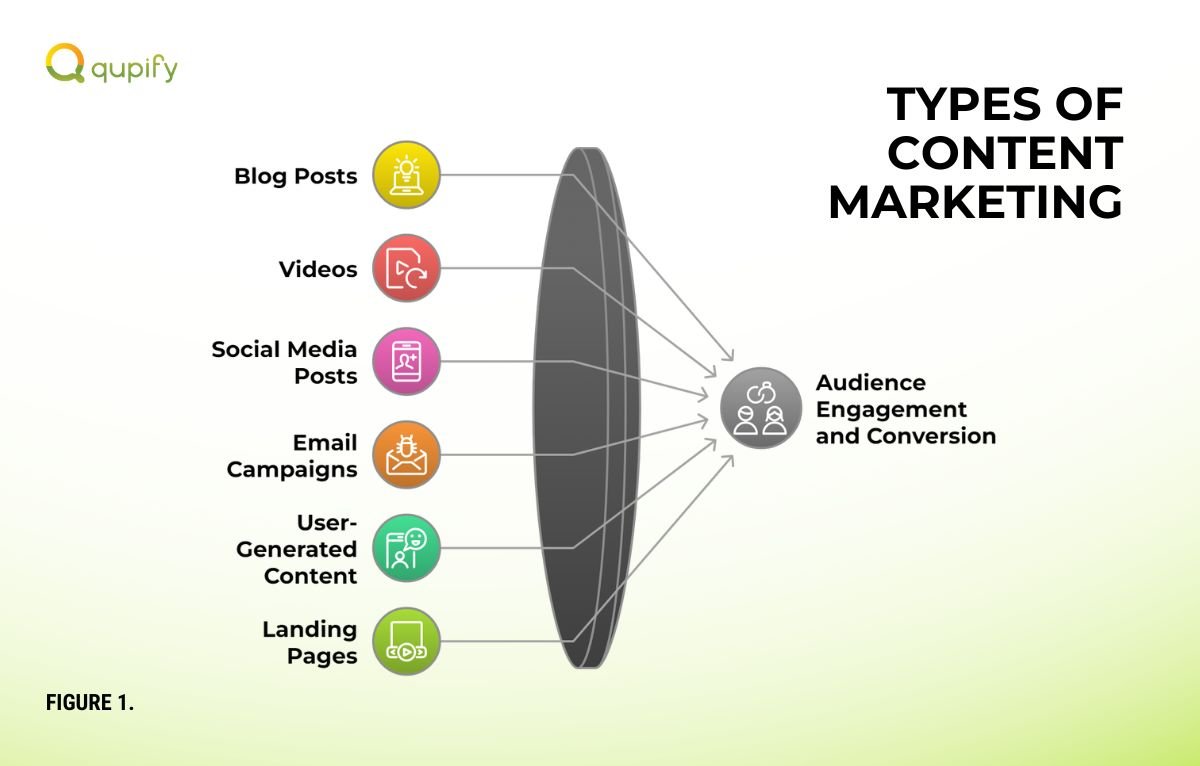How Content Marketing Drives Sales
Content marketing is one of the most effective ways to connect with potential customers in today’s digital world. Instead of directly pushing products or services, it focuses on providing value through information, education, or entertainment.
By addressing the needs and interests of your audience, content marketing creates trust and positions your brand as a helpful resource. This strategy is not about short-term gains but about building long-lasting relationships with your audience.
Through blogs, videos, social media posts, and other formats, businesses can attract people who are genuinely interested in what they offer. Over time, this approach helps guide potential customers through the decision-making process and increases the likelihood of conversions. When done well, content marketing doesn’t just drive sales—it creates loyal customers who return to your brand time and again.

Reaching the Right Audience
Content marketing helps you reach people who are genuinely interested in what you offer. By creating content optimized for search engines, your website can appear when someone searches for relevant topics. This makes it easier for potential customers to discover your brand.
Social media is also an effective tool for spreading your message. Engaging posts, videos, or articles encourage users to share your content with others, expanding your reach. Tailoring your content to your audience’s needs ensures you attract the right people who are more likely to become customers.
Guiding Customers Through the Sales Funnel
Content marketing supports customers at every stage of their buying journey. At the awareness stage, blog posts or videos introduce your brand and address common questions. This builds familiarity and encourages potential customers to learn more.
When they start considering their options, detailed guides, case studies, or testimonials can help them compare and decide. At the decision stage, content like product demos or special offers can give them the final push to make a purchase. This seamless journey increases the chances of turning interest into sales.
Building Trust and Authority
Creating educational content positions your brand as a trusted source of information. For example, tutorials or how-to articles show your audience that you understand their challenges and can provide solutions. Over time, this builds trust and makes people more confident in your offerings.
Customer stories and testimonials further enhance your credibility. When potential buyers see real examples of how your products or services have helped others, they’re more likely to trust you. Regularly sharing consistent, high-quality content strengthens this trust.
Driving Engagement and Conversions
Interactive content is a powerful way to engage your audience. Tools like quizzes, live chats, or calculators make your content more dynamic and encourage potential buyers to explore your offerings. Personalized content is another effective strategy, as it speaks directly to the preferences and needs of each customer.
Including clear calls-to-action (CTAs) in your content is essential for driving sales. Whether it’s a “Buy Now” button or an invitation to sign up for a free trial, CTAs guide your audience to take the next step. By making these actions simple and accessible, you can increase conversions.
Encouraging Repeat Sales and Retention
Content marketing doesn’t stop after a customer makes a purchase. Post-purchase content, like tutorials or troubleshooting guides, helps customers use your product more effectively. Satisfied customers are more likely to return for future purchases.
Loyalty programs and exclusive offers promoted through content can also encourage repeat sales. Building a sense of community through newsletters or social media groups keeps customers engaged with your brand. These efforts strengthen relationships and promote long-term loyalty.
Measuring and Optimizing Performance
To see how well your content marketing works, it’s important to track key metrics like traffic, engagement, and sales. Tools like Google Analytics can help you understand which content performs best. This data allows you to refine your strategy and focus on what drives results.
Adapting based on these insights ensures your content remains effective and relevant. By continuously improving your approach, you can maximize the impact of your content marketing efforts.
Types of Content Marketing for Maximum Effectiveness
Using the right types of content marketing can help your business effectively reach, engage, and convert your audience.
Here are the most impactful formats and how they can drive results:
Blog Posts
Blogs are a foundational tool for content marketing. They educate your audience, improve search engine visibility, and drive organic traffic. Consistently publishing relevant and informative blog posts positions your business as an authority in your industry.
For tips on creating impactful blogs, visit HubSpot’s Guide to Blogging.
Videos
Videos are highly engaging and versatile. They can explain complex topics, demonstrate products, or share customer testimonials. Platforms like YouTube, Instagram, and TikTok make it easy to reach large audiences and boost brand visibility.
Social Media Posts
Social media allows for direct interaction with your audience through quick, impactful content. Short posts, reels, and stories keep your followers engaged, informed, and entertained, driving awareness and building relationships.
Email Campaigns
Emails remain one of the most effective ways to communicate directly with your audience. Personalized campaigns keep potential and existing customers engaged by offering updates, exclusive promotions, and helpful tips.
User-Generated Content (UGC)
UGC includes reviews, testimonials, or social media posts created by your customers. It adds authenticity to your brand and encourages trust among potential buyers, as people often rely on peer recommendations.
Landing Pages
Optimized landing pages focused on specific campaigns or products provide clear, actionable information. They are designed to convert visitors into leads or customers by focusing on a single call-to-action.
Tutorials and How-To Guides
Step-by-step guides and tutorials offer practical solutions to common problems. This type of content builds trust by showcasing your expertise and providing immediate value.
Webinars and Live Streams
Interactive and informative, webinars and live streams allow you to engage directly with your audience. They’re effective for teaching, answering questions, and building a sense of community, while also showcasing your expertise.

Conclusion
Content marketing is a powerful way to drive sales by attracting, engaging, and converting customers. It builds trust, guides people through their buying journey, and keeps them coming back for more.
By investing in a solid content marketing strategy, businesses can grow their revenue and establish a loyal customer base.



